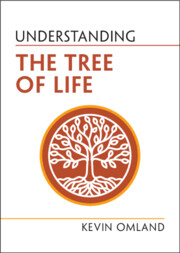
- Publisher:
- Cambridge University Press
- Online publication date:
- September 2025
- Print publication year:
- 2025
- Online ISBN:
- 9781009207287
- Subjects:
- Life Sciences, Evolutionary Biology, Philosophy of Science, Philosophy
- Series:
- Understanding Life

Challenge outdated views of evolution and embrace a clearer understanding of life's incredible diversity with this enlightening exploration of evolutionary trees. Far from being a linear ladder of progress, evolution is a vast, branching tree where all species-humans included-are evolutionary cousins, not ancestors or descendants. Every organism alive today shares the same 3.5 billion years of evolutionary history, uniquely adapted to its own environment. This book takes readers on a journey through the tree of life, beginning with humanity's closest relatives and expanding outward to the most distantly related organisms. By unravelling the misconceptions perpetuated by news articles and traditional depictions of evolution, it offers a fresh perspective on life's interconnectedness. With engaging insights and vivid illustrations, this book fosters a deeper appreciation for the remarkable complexity and diversity of life on Earth, making it an essential read for anyone curious about our evolutionary story.
‘In this fascinating book, Kevin Omland takes us on a tour of the tree of life, intertwining marvelous stories of evolutionary adaptation with cogent explanations of how scientists discover what we know about the history of life.’
Jonathan Losos - Washington University
‘Using engaging examples from across the tree of life, Omland identifies and debunks significant misinterpretations about evolutionary history that are widespread inside and outside of professional scientific circles. Readers will become skilled at thinking accurately about evolution as a branching, non-progressive process and, on the way, learn how our own species, Homo sapiens, connects through shared ancestry to the other fascinating organisms with which we share the planet’
David A. Baum - University of Wisconsin, Madison
‘Expertly written, in this book Omland strips away all of the misconceptions about phylogenetic trees and our own evolutionary history, so that we can see the fundamental beauty in the continuously unfolding story of life on this planet. Along the way, he elevates organisms that have been incorrectly referred to as living fossils or primitive species, spotlighting their unique adaptations for their way of life. I highly recommend this book to students, natural history buffs, and practicing scientists alike!’
Stacey D. Smith - University of Colorado, Boulder
 Loading metrics...
Loading metrics...
* Views captured on Cambridge Core between #date#. This data will be updated every 24 hours.
Usage data cannot currently be displayed.
The PDF of this book conforms to version 2.0 of the Web Content Accessibility Guidelines (WCAG), ensuring core accessibility principles are addressed and meets the basic (A) level of WCAG compliance, addressing essential accessibility barriers.
Allows you to navigate directly to chapters, sections, or non‐text items through a linked table of contents, reducing the need for extensive scrolling.
Provides an interactive index, letting you go straight to where a term or subject appears in the text without manual searching.
You will encounter all content (including footnotes, captions, etc.) in a clear, sequential flow, making it easier to follow with assistive tools like screen readers.
You get concise descriptions (for images, charts, or media clips), ensuring you do not miss crucial information when visual or audio elements are not accessible.
You get more than just short alt text: you have comprehensive text equivalents, transcripts, captions, or audio descriptions for substantial non‐text content, which is especially helpful for complex visuals or multimedia.
You will still understand key ideas or prompts without relying solely on colour, which is especially helpful if you have colour vision deficiencies.
You gain clarity from ARIA (Accessible Rich Internet Applications) roles and attributes, as they help assistive technologies interpret how each part of the content functions.